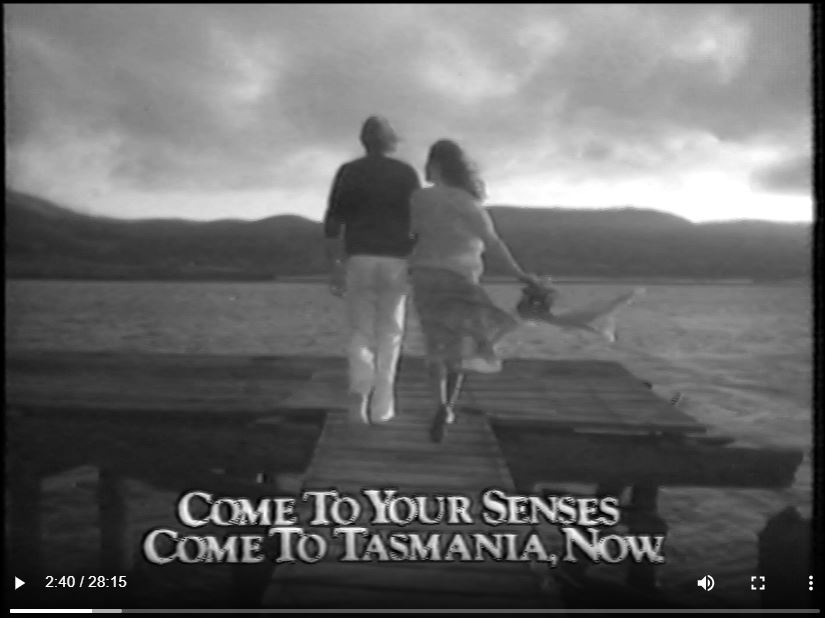Preservation Digitisation Project

In February 2021 the Tasmanian Libraries launched a major project – the Preservation Digitisation Project – across Digitisation Services, the Government Archives, and the Community Archives teams. The aim of this project is to preserve our Tasmanian film, sound and video collections for long-term preservation and access by the public. Our priority is the magnetic tape collection which is at great risk of being lost forever if not digitised before 2025.
To digitise our audio-visual collections, our Digitisation Services team is using a combination of outsourcing and in-house digitisation. We are currently working with local vendors to digitise magnetic tape formats such as Betacam, VHS tapes and audio cassettes. In early 2022 we will start outsourcing the bulk of our non-viewing copies of motion picture film to vendors. In-house digitisation will also occur by purchasing a film scanner that will be used to digitise 8, 16 and 35mm film. This film scanner will also be used for viewing and assessing film before digitising.
The Preservation Digitisation Project will enable us to provide improved access to our film, magnetic tape and sound collections as well as preserve the content in contemporary digital form. Digitised items will become accessible over time via our online catalogue on the Libraries Tasmania website. A team of Government and Community Archivists will assess all items to check access permissions and determine copyright. Some of the newly digitised film highlights are accessible on our YouTube channel where you can see a great overview of our rich film and sound collection. New items are added regularly.
Other digitised films can also be found through the library catalogue, like this Tasmanian Film Corporation show reel from 1985, which showcases some of the company’s work in advertisements, documentaries, drama and instructional videos. For more examples of Tasmanian Film Corporation work, and information about its history, have a look at our previous blog post, Tasmanian Film Corporation: If it moves, we’ll shoot it.

Another example of Tasmanian tourism advertisements is this jazzy number from 1987, enticing visitors to Tasmania with saxophones and sultry shots of crayfish.

And if shellfish aren’t your bag, maybe you prefer a laid-back promotion of trout fishing in Tasmanian waters…

We want to be sure that the Tasmanian Archives are available for future generations to learn from and explore. If you have any unique films lying around with footage that documents significant elements of Tasmanian culture, life or the Tasmanian environment (for which you know or hold the copyright), you may like to consider offering material to our archives. Films are prioritised for digitisation based on their value and vulnerability.


Hi Karen, I am interested in how we will be able to read digitised material in the future. I have diaries from six years as a nurse in the Central Australian Aboriginal Reserve and intend to digitally photograph them to make for easier storage in a library or museum, but am told there is no guarantee that they will be readable in the future. Do you have thoughts on this please?
Hi Graham, thank you for your comment. As with most things, it is hard to say how the technology will change in the future, however there are digital preservation standards, used by Libraries, Museums, Art Galleries and other cultural institutes all over the world. If you’d like to digitally preserve these diaries for the future, I would suggest getting them digitised by a professional. A conversation with your local Library or Museum can help and also helpful if you wanted to donate these diaries. If you’d like to keep these digital files for your own use, a Digital Preservation System like Preservica is a wonderful and easy tool. They have a free version online for private use of digital storage.
A very worthwhile project. Films do deteriorate over time as we all know. I have a collection of more than 800 golf films – mostly sourced from USA. These range from 8mm, 16mm and VHS. I noticed more and more that golf films did not make the transition over from VHS to DVD. Then from there discovered an even lower ratio of 8mm and 16mm found there way to VHS and beyond. Many have the notorious vinegar smell and fiery marks on the film/screen but that just adds character and means I got them just in time.